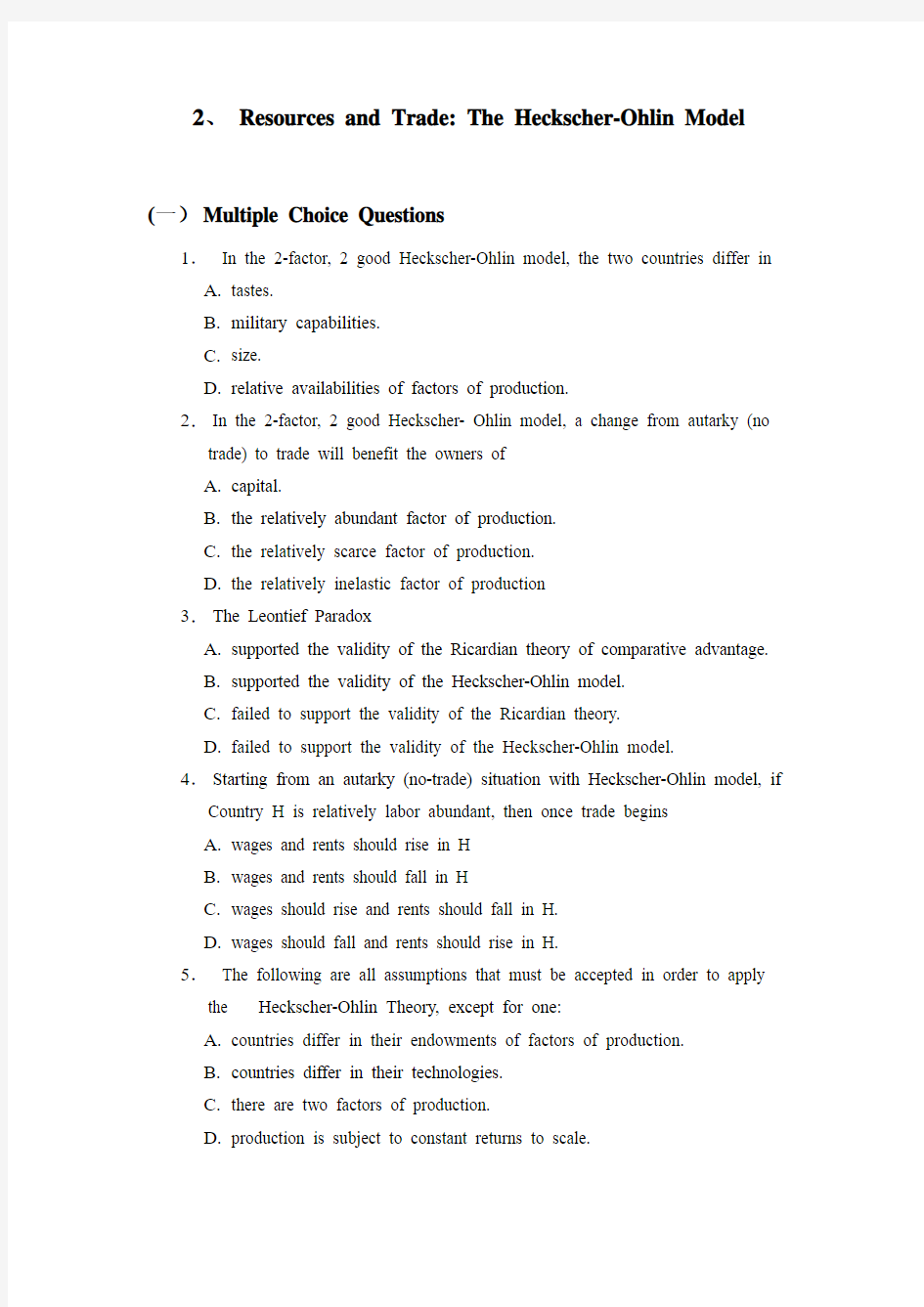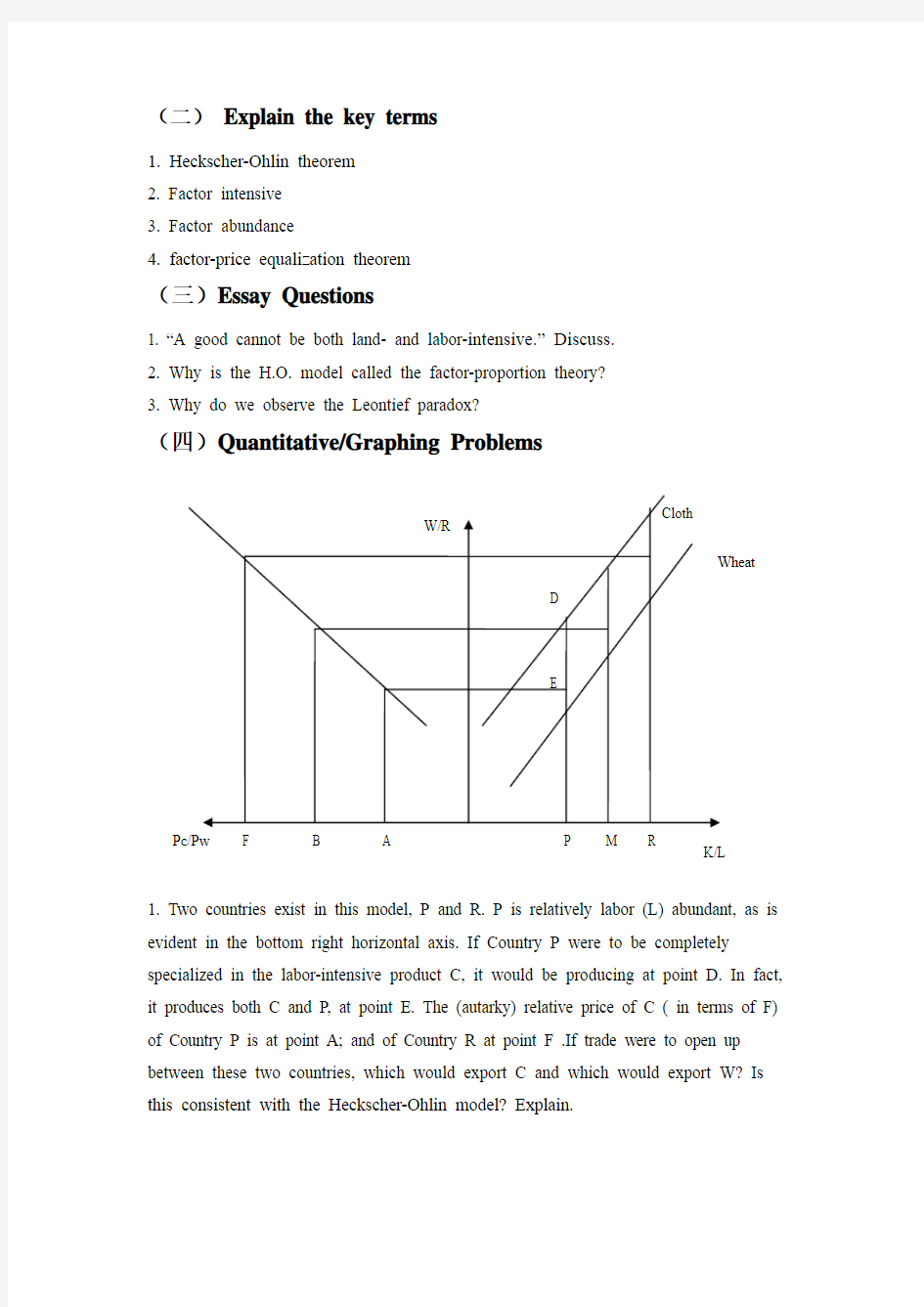2、H-O theory


2、Resources and Trade: The Heckscher-Ohlin Model
(一)Multiple Choice Questions
1.In the 2-factor, 2 good Heckscher-Ohlin model, the two countries differ in
A.tastes.
https://www.360docs.net/doc/e12791249.html,itary capabilities.
C.size.
D.relative availabilities of factors of production.
2.In the 2-factor, 2 good Heckscher- Ohlin model, a change from autarky (no trade) to trade will benefit the owners of
A.capital.
B.the relatively abundant factor of production.
C.the relatively scarce factor of production.
D.the relatively inelastic factor of production
3.The Leontief Paradox
A.supported the validity of the Ricardian theory of comparative advantage.
B.supported the validity of the Heckscher-Ohlin model.
C.failed to support the validity of the Ricardian theory.
D.failed to support the validity of the Heckscher-Ohlin model.
4.Starting from an autarky (no-trade) situation with Heckscher-Ohlin model, if Country H is relatively labor abundant, then once trade begins
A.wages and rents should rise in H
B.wages and rents should fall in H
C.wages should rise and rents should fall in H.
D.wages should fall and rents should rise in H.
5.The following are all assumptions that must be accepted in order to apply the Heckscher-Ohlin Theory, except for one:
A.countries differ in their endowments of factors of production.
B.countries differ in their technologies.
C.there are two factors of production.
D.production is subject to constant returns to scale.
(二)Explain the key terms
1. Heckscher-Ohlin theorem
2. Factor intensive
3. Factor abundance
4. factor-price equalization theorem
(三)Essay Questions
1. “A good cannot be both land- and labor-intensive.” Discuss.
2. Why is the H.O. model called the factor-proportion theory?
3. Why do we observe the Leontief paradox?
(四)Quantitative/Graphing Problems
1. Two countries exist in this model, P and R. P is relatively labor (L) abundant, as is evident in the bottom right horizontal axis. If Country P were to be completely specialized in the labor-intensive product C, it would be producing at point D. In fact, it produces both C and P, at point E. The (autarky) relative price of C ( in terms of F) of Country P is at point A; and of Country R at point F .If trade were to open up between these two countries, which would export C and which would export W? Is this consistent with the Heckscher-Ohlin model? Explain.
2. If trade were to open up between P and R, where would the world terms of trade locate in the figure above (somewhere on the P C/P w axis)? Would relative wages (w/r) in the two countries become equal? Is this consistent with the Heckscher-Ohlin model? Explain.
3. Now repeat the exercise but substitute country M for country R. How do the answers differ from those in question 2 above? Explain the reason for any differences you note.
5. In autarky, Country P was producing at point E. With trade, would its production point be found above or below point E? Explain why. What must happen in the K/L intensity ratio in the production of each of the products in this country when moving from autarky to free trade?
6. Using the answers to question 4, can you guess which group of producers in Country P might lobby against free trade?
